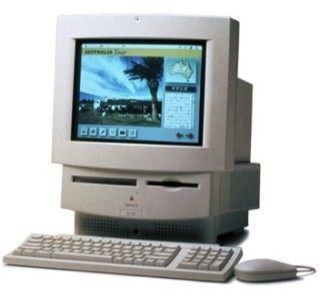
VGA, SVGA: In Search of a Sharp Image
The following text describes the elements that people had to look at when buying computers in the past. VGA monitors, mostly obsolete today, were not recommended. SVGA or Super VGA were more popular. Computers in that era did not even necessarily include a CD-ROM drive! Another important aspect to look at was dot pitch, which refers to the distance between pixels and thus, are responsible for the clarity and sharpness of the image.
A buyer’s guide to finding the best monitor It generally strikes after you star start buying lots of graphics-packed software for your new computer, and perhaps a sound card, and you begin to think, “This stuff would really look great if I had a big color monitor”. You’ve been bitten by the bigger-better-color bug. Before you make an impulsive purchase, are yourself with an understanding of the ways that monitors are differentiated.
Color: Get a color monitor. A monochrome monitor is certainly serviceable, but all your programs – even word processing – will look better in color. Moreover, many new software programs are unintelligible in black and white because their interface depends on color coding.
Resolution: Display resolution refers to the number of dots of light (called pixels) that a monitor can display – the higher the resolution, the clearer the picture. The absolute minimum display resolution standard for monitors is 640 pixels across the screen and 580 pixels down. Instead of rattling off those numbers, people in the computer industry call that resolution VGA (Video Graphics Adapter). VGA monitors are pretty outdated at this point, though. You’ll be much happier with an SVGA or Super VGA monitor. SVGA monitors aren’t much more expensive than VGA, and the extra investment is worth it.
Dot Pitch: The distance between each pixel on the monitor’s screen is measured in millimeters. The smaller the dot pitch, the crisper the image. If you really want a clear image, go with a dot pitch of 0.28 millimeters or less. You might hear a salesperson refer to dot pitch as stripe pitch. Don’t worry. It’s pretty much the same thing.
Size: Like television sets, monitors are measured in inches by the diagonal length of the cathode ray tube inside. The current standard is 14 inches, but as more people buy multimedia computers (which come equipped with CD-ROM Drives, sound and video cards, and speakers0, the standard is increasing to 17 inches. Monitors do get bigger – up to 24 inches – but mega-monitors are really for people who work every day with desktop publishing packages or huge spreadsheets, which require a different driver, or software program, for each program you use. If you’re updating from a 14-inch monitor, and you’re the average user (you do a lot of word processing, some spreadsheet work, and would like to update to a multimedia system), go with a 17-inch monitor.
Flicker: Monitor flicker can cause eye stress and headaches, so it’s worth your while to buy a monitor that uses technology to prevent it. The watchwords here are “vertical refresh rate” and “interlacing”. Vertical refresh rate refers to the number of times that the screen is repainted from top to bottom and is measured in Hertz (Hz). The higher number, the better. If you use a Macintosh, or use Windows with your PC, you want a monitor that has a vertical refresh rate of 72 Hz or higher: otherwise, you’ll be plagued by constant flicker. Interfacing refers to the monitor’s refresh method. Interlaced monitor’s refresh every other line of the picture on your monitor’s screen, then go back and repaint the lines in between. A noninterfaced monitor, however, paints the whole screen at once, which means less flicker. Our advice: Get a noninterlaced monitor with a vertical refresh rate of at least 72 Hz.
Image manipulation: The more ways you can finesse the picture on your screen, the better the image quality. Almost all monitors come with a basic set of controls: brightness, contrast, horizontal and vertical positioning, and image size. But if you`re opting for a color monitor, you might want to look for controls that let you might want to look for controls that let you adjust the intensity of colors and reduce moiré patterns – those weird, wavy lines that wiggle around in areas of solid color. Look for “color connection” and “digital” controls. Soon, you’ll be able to buy super-fancy software-based controls that you operate from your computer. New isn’t always better, though – particularly if you’re on a budget. A good old-fashioned thumb-wheel control that sharpens a beautiful image beats an average image with digital controls any day.
See also:
- Apple Encyclopedia: all information about company, products, electronic devices, operating systems and apps.






Facebook
Twitter
RSS